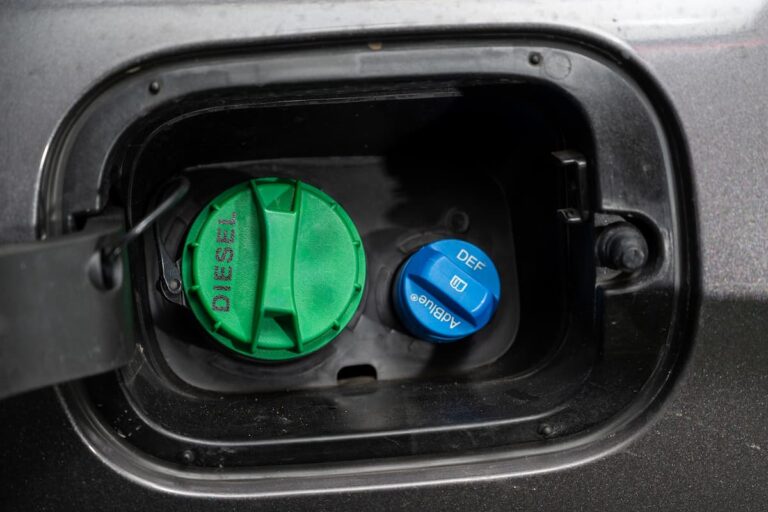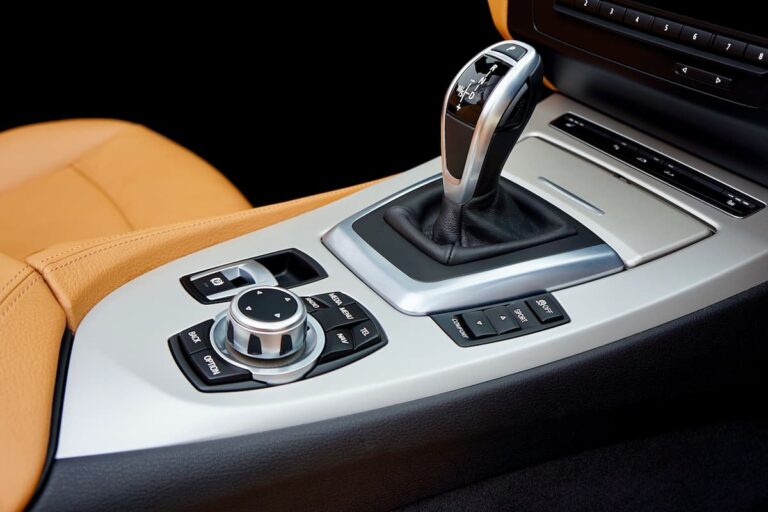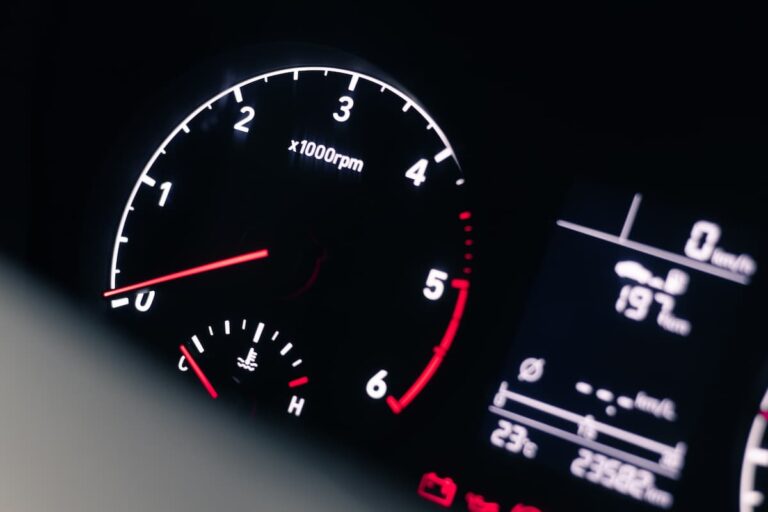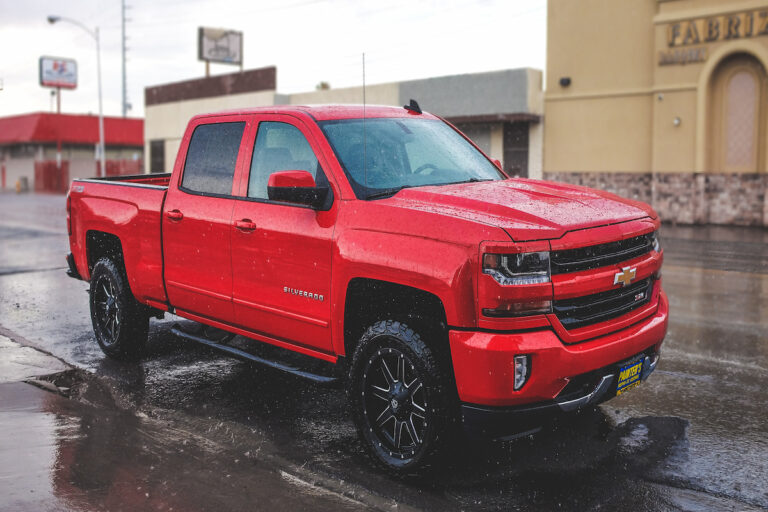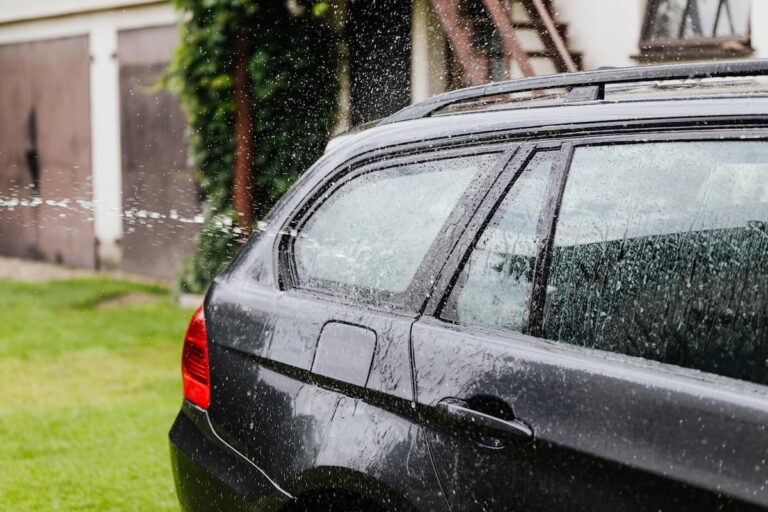Can A Car Be Struck By Lightning?
Driving in the rain sucks. Depending on how bad the storm is, your visibility might be impacted, and the roads may feel more slippery and dangerous than usual.
When there’s thunder and lightning, the experience can be even worse, and you might be wondering if you’re safe from lightning inside your car and if it can be struck by lightning.
Vehicles aren’t immune from lightning and can be struck while driving or parked outdoors. Lightning can hit the antenna or the roof, but the electricity passes through the metal frame and into the ground. People inside the vehicle are usually safe, but the car can be severely damaged.
What Happens When Lightning Strikes a Car?
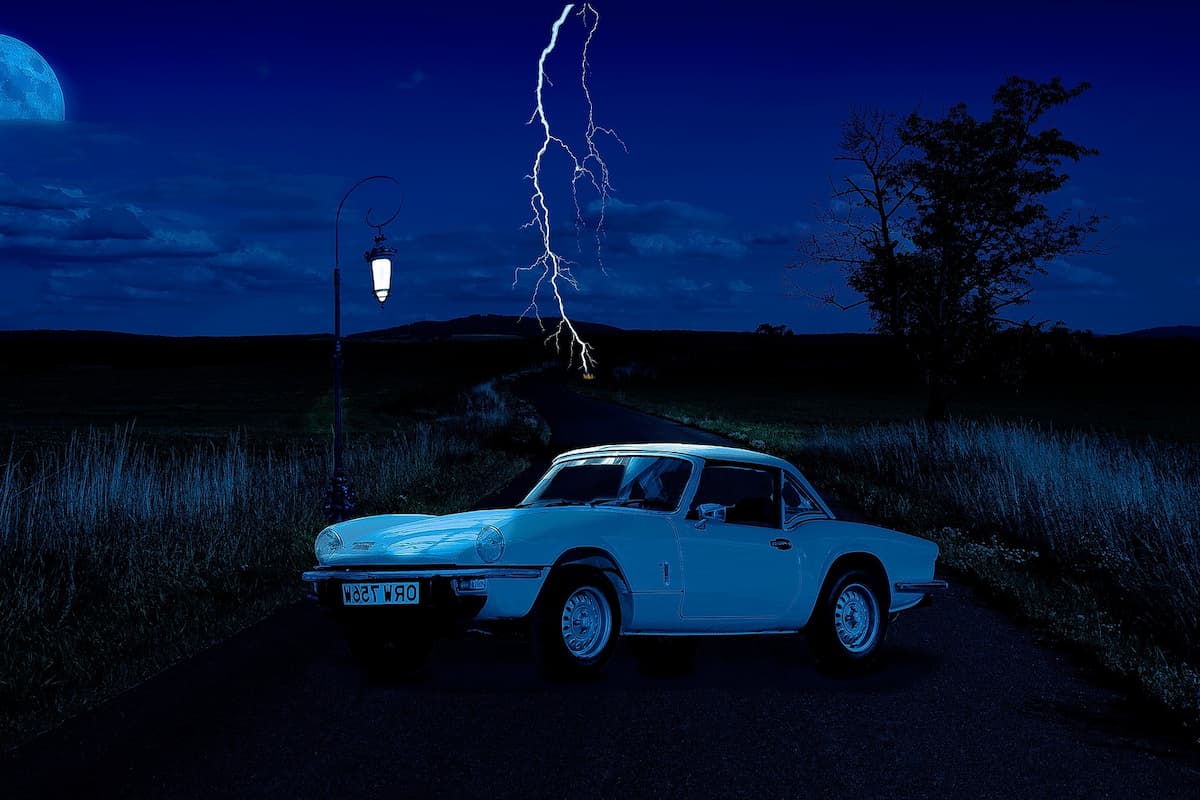
Most people believe they’re safe from lightning strikes inside their cars because the rubber tires ground the vehicle and protect them.
This is actually a myth.
Contrary to what most people believe, the metal frame is what prevents electrocution when lightning strikes your car.
A cloud-to-car lightning strike will almost always hit one of two places on a vehicle – either the antenna or the roof. The electricity then travels through the car’s frame into the ground.
When struck by lightning, your vehicle acts like a makeshift Faraday cage, which are structures made of conductive materials.
When hit with an electric surge, Faraday cages conduct the electricity via the outside of the cage, protecting whatever is inside from the electric currents.
Even though you’re protected inside the vehicle, it isn’t safe to lean on the exterior of a car during a storm. Also, convertibles, motorcycles, and fiberglass vehicles do not offer the same protection.
If your vehicle is struck by lightning, it can also suffer quite a bit of damage.
The heat of the lightning can melt an antenna and cause it to spark.
Lightning can destroy the electrical system, causing it to fail, melt, burst, or short-circuit.
Electricity might get into the small wires of the rear window. These normally help defrost the glass, but the electrical surge can shatter it.
It’s also extremely common for lightning to burst the tires.
Finally, lightning may cause the vehicle to catch on fire.
So yes, your car can be struck by lightning – you’ll likely be safe, but the vehicle can be severely damaged.
If your car is struck by lightning, you need to get out and find appropriate shelter.
Is Your Car a Good Shelter During a Storm?
Your car is a good spot to wait out a storm if you can’t safely access a building.
Because the car’s frame will protect you from lightning, it’s much better to be inside a vehicle than standing outside in an open area.
However, you aren’t 100% safe in a car during a lightning storm.
You want to ensure you aren’t touching any conductive metal parts. Don’t lean on the doors, touch the pedals, or open your windows.
Going inside a building and seeking real shelter is always better than sitting inside your car.
Other Myths About Lightning Strikes

A lot of people believe your rubber tires are what insulate your vehicle when it’s struck by lightning. Instead, it’s the frame of the car that protects you.
But what other myths about lightning do people believe?
Lightning Never Strikes The Same Spot Twice
Lightning frequently strikes the same spot more than once. If it didn’t, lightning rods wouldn’t be very effective.
Lightning strikes a spot for a reason. To most people, it seems random. And it kind of is.
Isolated, pointy, and high spots are all more likely to be struck by lightning. It’s very common for lightning to hit multiple times in the same location because that’s where it’s easily drawn.
It’s also important to note that a lightning strike isn’t just electricity coming from a cloud.
A lightning bolt, at least the part we see, is the return current going back upwards.
Also, multiple pulses of electricity, which are not visible to the human eye, usually comprise a lightning strike.
So technically, lightning is always striking more than once.
High spots like skyscrapers, street lights, trees, and lightning rods are all struck more often than other places.
You’re Safe From Lightning If There Are No Clouds Overhead
Just because a storm isn’t above you doesn’t mean you’re safe from lightning.
Lightning can strike 3 miles (about 5 kilometers) from a thundercloud’s center, which is well beyond the scope of a large cloud.
Sometimes strikes can even reach beyond 10 miles (16 km), though this isn’t as common.
Even if the storm is farther away, you can still be struck by lightning.
You Can Seek Shelter Under A Tree
A tree will be a drier spot where you can avoid the incoming rain, but that doesn’t make it a good place to shelter during a storm.
Because of their height, trees are more likely than other spots to be struck by lightning.
According to weather.gov, trees are the second leading cause of lightning deaths each year.
The tree might be struck and explode, sending wood shrapnel into you. It could also fall on you, or the ground current dispersing around the tree might electrocute you.
Never shelter under a tree during a storm, especially a lone tree out in the open.
You Should Lie Down On The Ground To Reduce Your Chances Of Being Struck
Because height is a major factor in where lightning strikes, it might seem like good sense to lie on the ground to reduce your height and profile as much as possible.
Unfortunately, this is one of the worst things you can do.
When lightning strikes the ground, it spreads out. Lying on the ground exposes you to potentially lethal ground currents.
Instead, you should quickly move to the safest shelter you can find.
Metal Structures Are More Likely To Be Hit By Lightning
While metal conducts electricity (most of the time), it doesn’t necessarily attract it.
A metal building isn’t more likely to be struck than any other. In fact, the material of something has little to do with the probability of it being struck by lightning.
Shape, height, and isolation are the factors that make an object ‘attractive’ to lightning.
It is why it’s more likely lightning will strike a tree in an open field rather than a metal wheelbarrow left in the yard.
Conclusion
Your car can be struck by lightning, though it will usually protect you from being electrocuted if you’re inside.
The vehicle might sustain extensive damage – from destroyed tires to fried electrical systems to a potential fire – but you’re unlikely to be severely injured.
If your vehicle is struck by lightning, immediately make your way into the nearest building to guarantee your continued safety.

